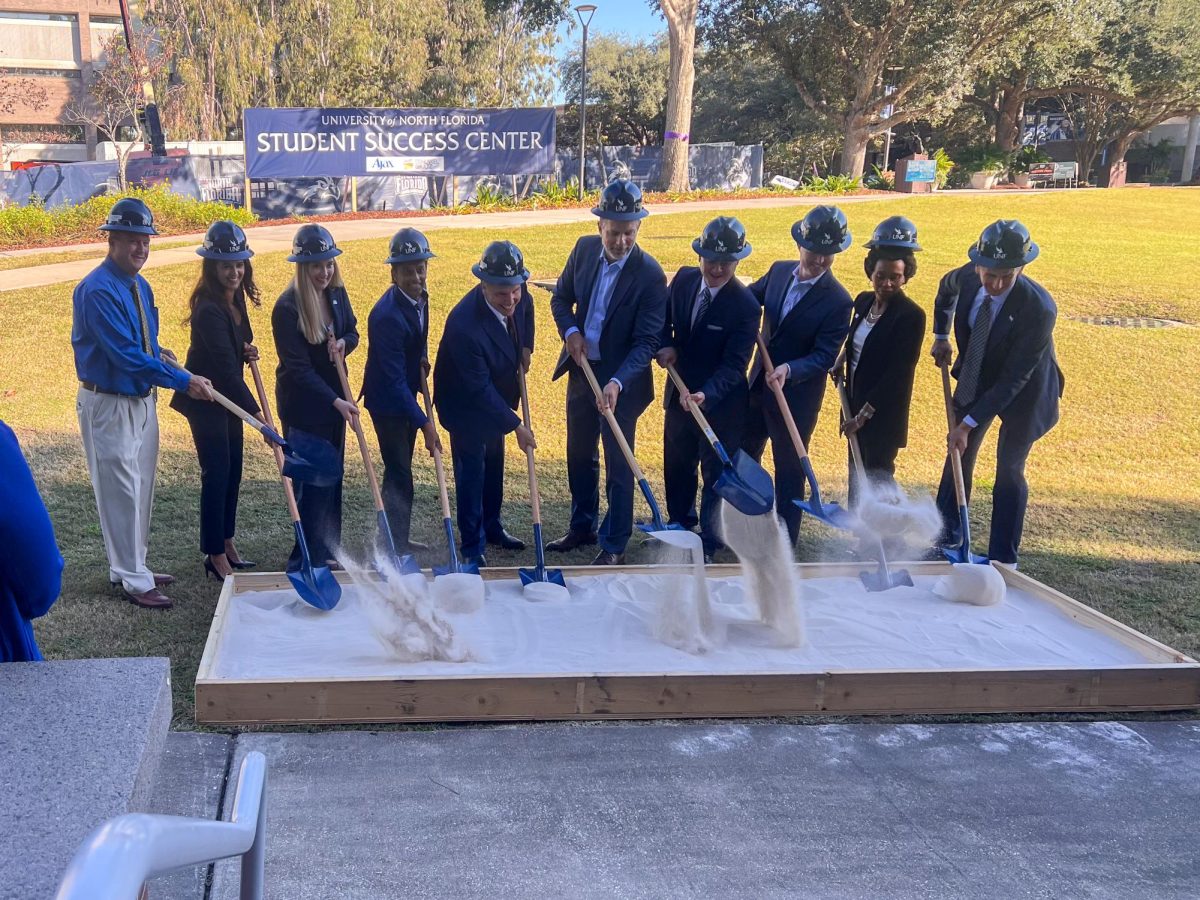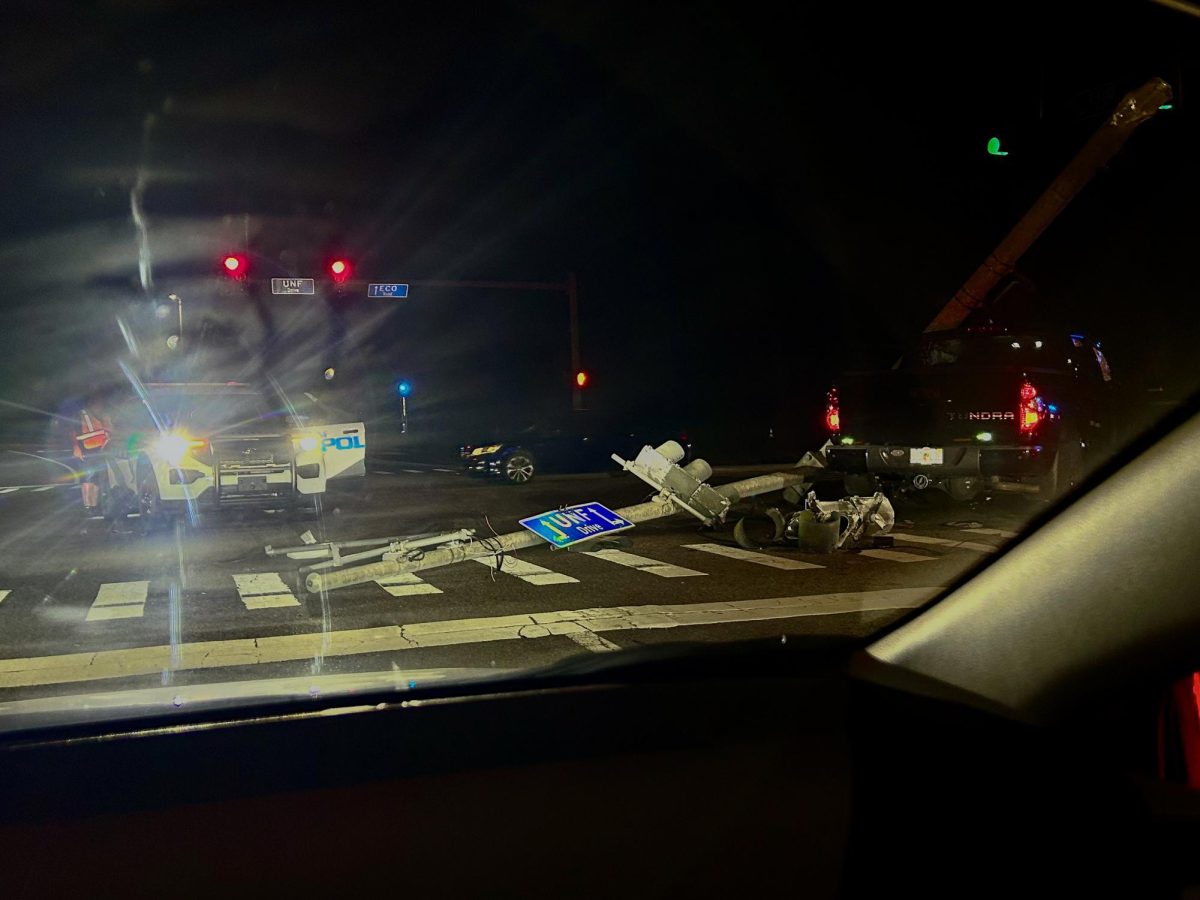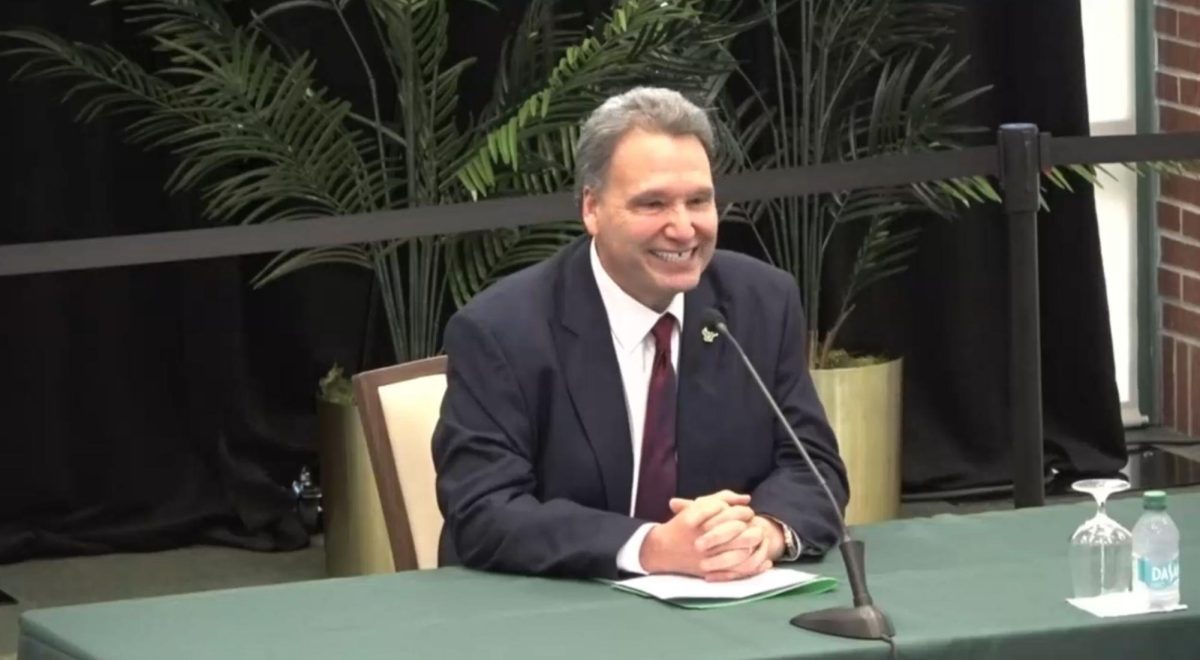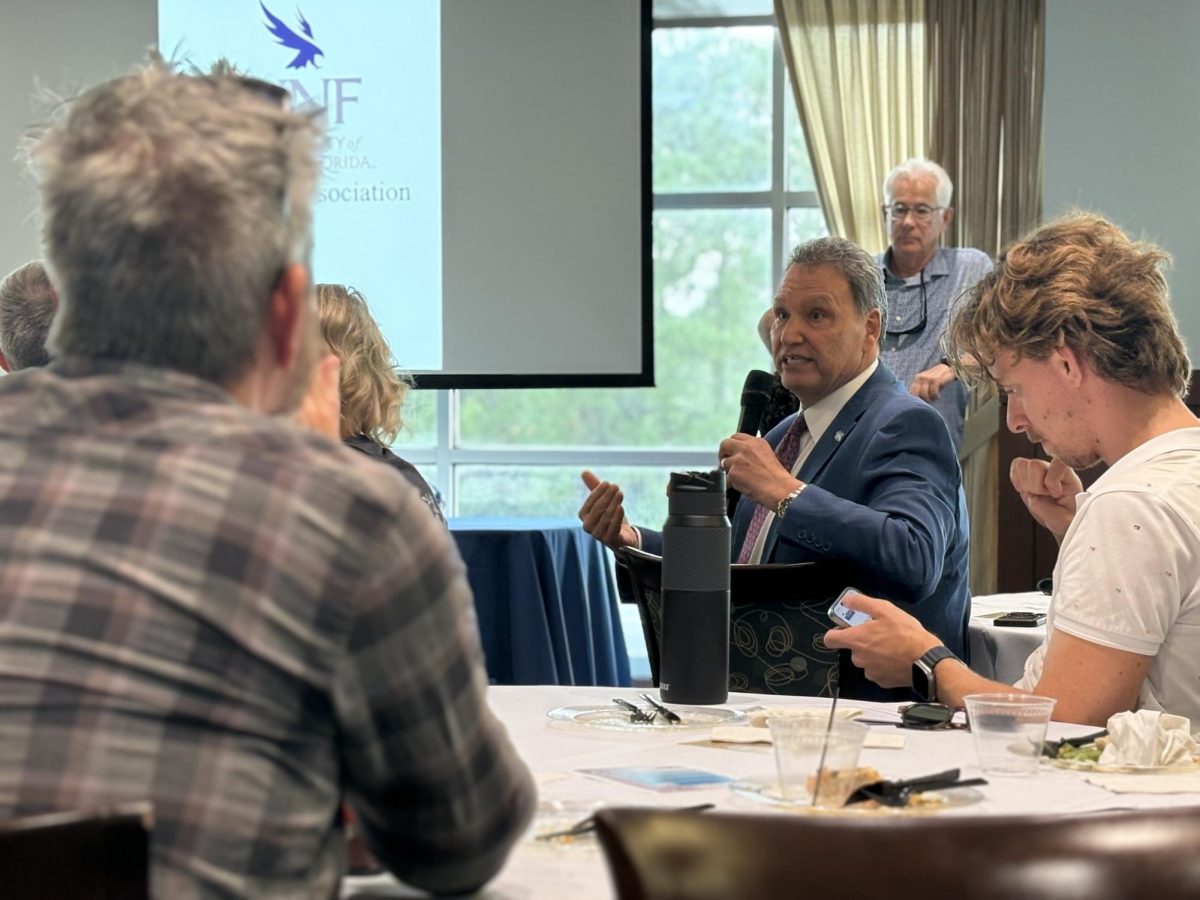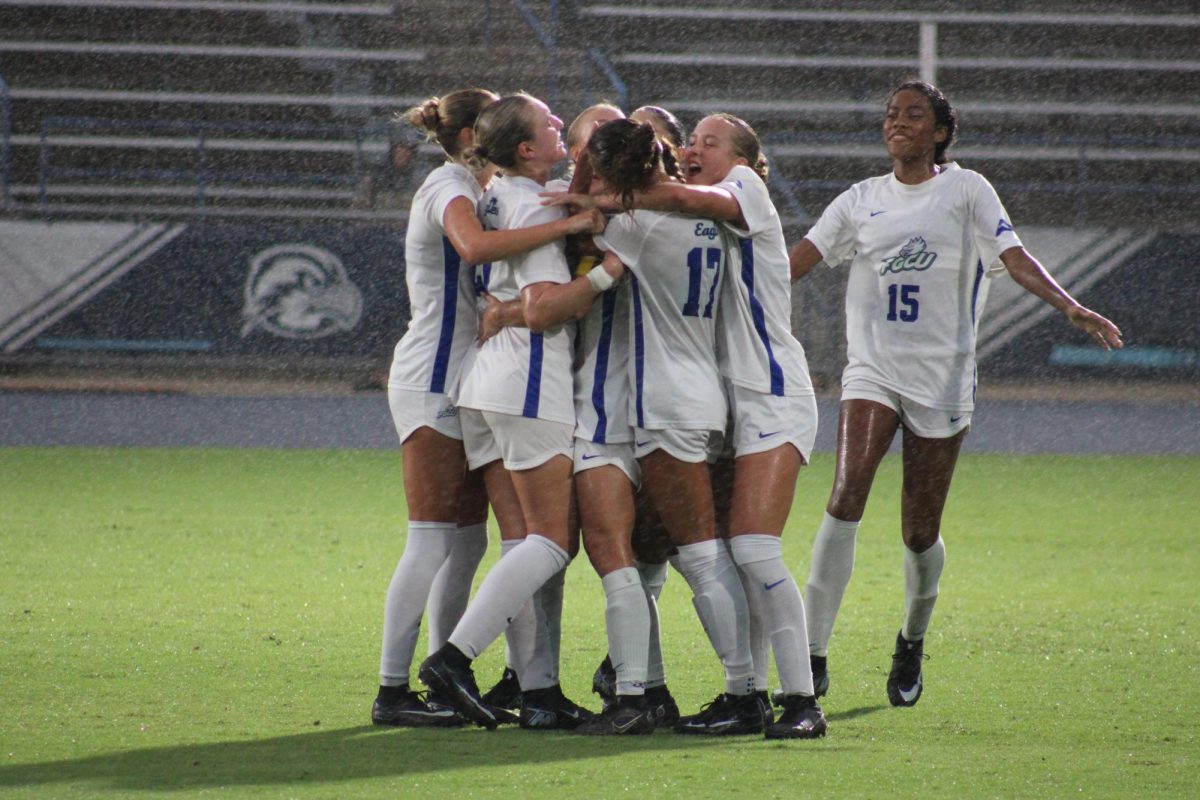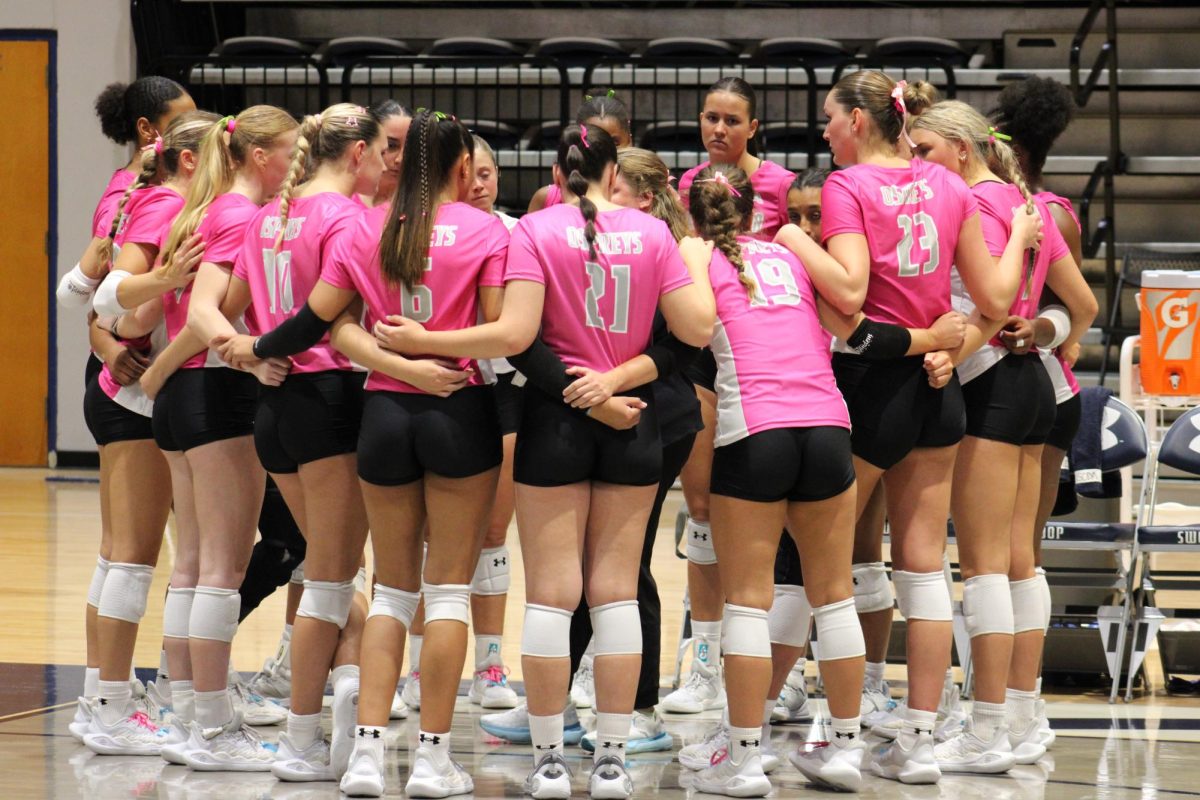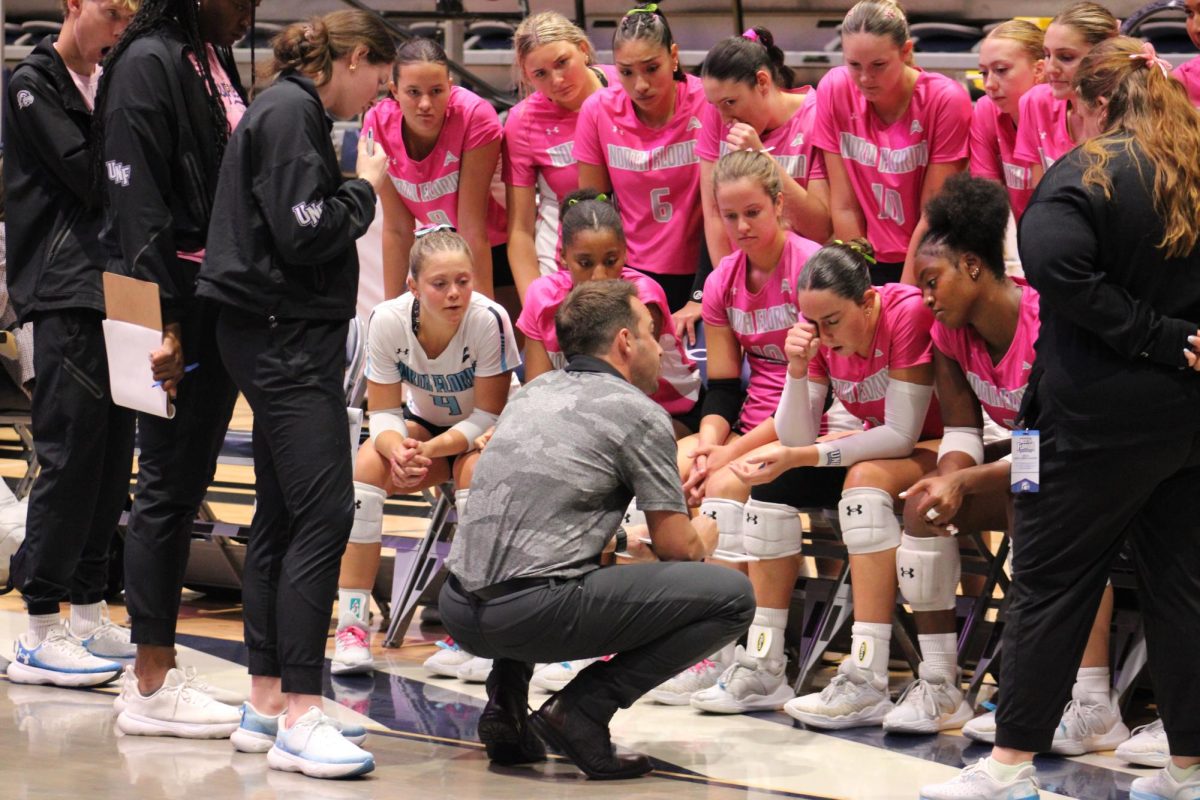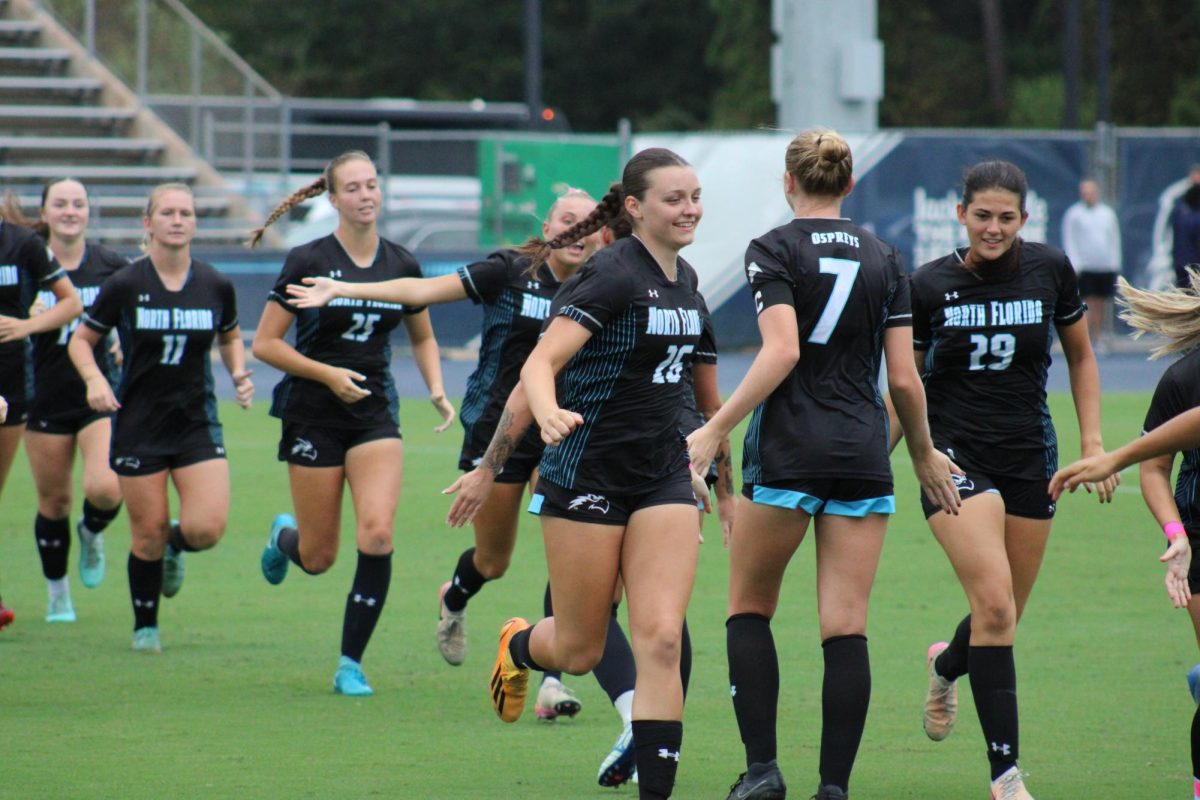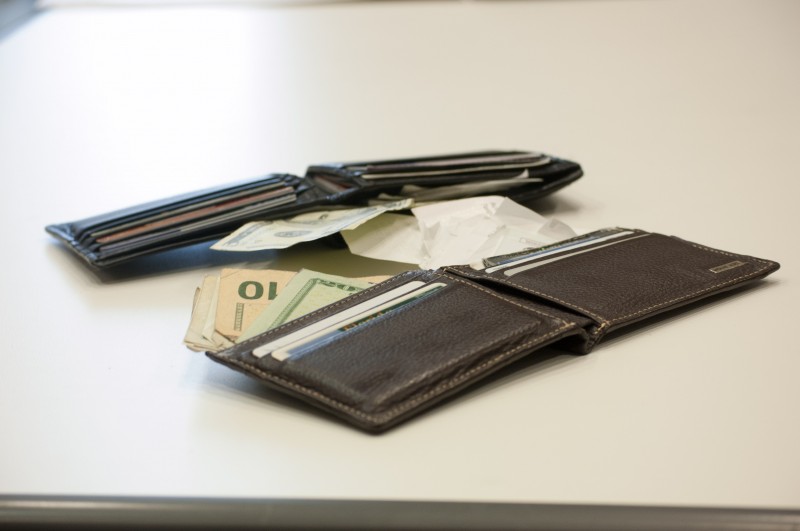
Mario Linton took out a $7,500 loan to make it through college at UNF.
For this English senior, claiming the title as the first member in his family to earn a bachelor’s counterbalances his incurred loan debt. But at least Linton won’t have to pay that off for a while.
Linton is joining the Air Force as an officer after he graduates. He said he is not worried about the loan and will have it paid off within a few years.
However, there are students who will be paying off their incurred loan debt for the next 10 years or more after they graduate. But students won’t have to worry about their student loan interest rates doubling after President Barack Obama signed legislation July 6 to prevent that.
As well as keeping the loans from doubling, the legislation will keep them locked in at 3.4 percent interest rate for another year.
Subsidized means the government is paying the interest for the student while they are in school, said Anissa Agne, director of student financial aid at UNF. Subsidized loans are granted to students who show financial need, and unsubsidized loans are loans on which the government is not paying the interest while the student is in school, she said.
Samantha Stockli, a UNF elementary education alumna, borrowed $17,000 in unsubsidized loans to get her bachelor’s degree. Now graduated, she is paying the minimum payment of $208 a month for the next 10 years.
But paying only the minimum payment each month means she will be paying an extra $7,000 in interest fees, Stockli said. Right now, she can only afford to make the minimum payment, she said.
Stockli also has two credit cards that she is paying on right now, as well. But she is more worried about her credit card debt than her student loan debt, she said.
“I feel that my student loan debt was worth my education,” Stockli said. “I have a good paying job at Country Bumpkins daycare to help pay off my debt.”
Roughly, a little fewer than 50 percent of UNF students take out some type of loan, Agne said.
She said students should remember to think wisely; UNF’s average borrowed debt is between $11,000 and $12,000 for four years of school.
That college education is the price of a used car and will last you a lifetime, she said, so she advises students to borrow loans wisely and stack up on scholarships.
Paul Mason, a UNF economics professor, said students need to seek out all scholarship opportunities wherever they can find them because free money is better than borrowed money.
UNF has a lot of scholarships available for students, Mason said. Although some scholarships may be small, they will definitely add up, he said.
Agne said students should also seek out civic organizations to see if private scholarships are available. Students can check with their employer because some companies offer tuition reimbursement or have matching benefits, she said.
She said she sees refund checks out for $2,000-$3,000 per semester.
“Think twice before you use your refund money to buy a new outfit at the St. Johns Town Center,” Agne said.
If students don’t use their loans within the seven days it has been disbursed, they can come to One Stop Student Services and return their unused money, Agne said. Students definitely want to return the unused money to UNF and not their servicer because it goes back as though they’ve never taken it as a loan, she said. The 3 percent origination fee that the government keeps will be undone, as well.
She suggests students to only borrow what they need for tuition and books, don’t borrow the maximum they’re allowed if they don’t need it, Agne said.
More than 50 percent of UNF students have some form of Florida Bright Futures scholarship they’re using to help pay for classes, Agne said.
And Jazmine Tatum, a UNF international relations alumna, used her Bright Futures scholarship to pay for 75 percent of her tuition. Tatum only had to borrow $4,000 in a private loan from her bank to help pay for her bachelor’s, she said.
“Yes, my loan was worth my bachelor’s degree,” Tatum said. “I am traveling to Europe next month to teach English to students.”
Tatum is paying off her loan only making minimum payments, she said.
Interest rates on student loans have the opportunity to go higher or lower every year, Agne said.
One of the changes in the legislation is that after July 1 graduate students can only get unsubsidized loans, Agne said. The amount that they can still borrow remains the same at $20,500.
Students can chose to make quarterly payments through their loan servicer, or they may chose to let their interest accrue — then they would be paying interest on top of interest once they graduate, she said.
And repayment for both loans begins six months after the student graduates or drops below enrollment half time, Agne said.
However, student loans are not so much a crisis of what students are incurring in debt — it’s that the students are not getting the same quality jobs when they graduate to pay it off like they were 10 years ago, Mason said.
The cost of putting students in school to take higher tech jobs keeps going up — that affects how much students have to borrow in loans, Mason said.
You can consolidate your student loans, but you can only consolidate once, Agne said. Students should consolidate wisely when interest rates are low, she said.
Email Bonnie Mulqueen at reporter5@unfspinnaker.com.




